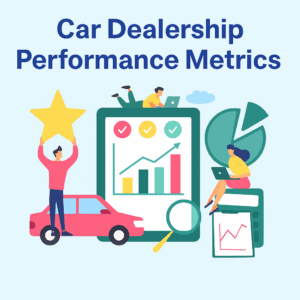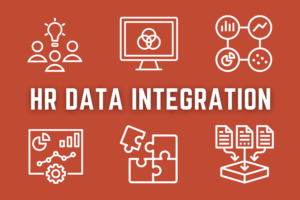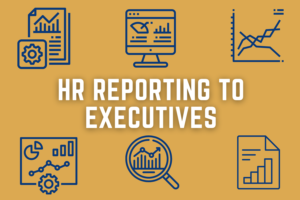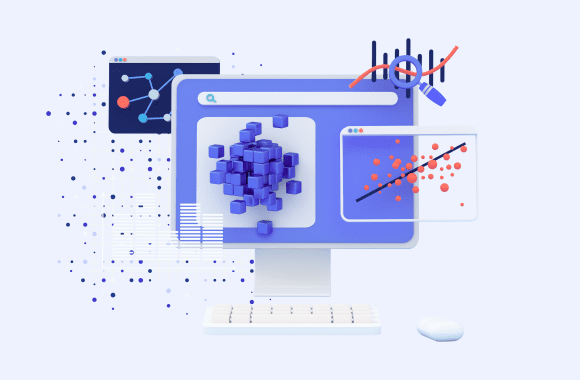You shouldn’t need a degree in data science to make confident HR decisions. And yet, the complexity of data retrieval and analysis in most software means that many businesses still operate in the dark. The lack of budget for business analysis tools, resources to interpret them, and the HR team’s capacity to leverage those insights results in us relying on outdated systems, manual processes, or just plain gut instinct to make crucial decisions that affect hiring, retention, and payroll.
The truth? You already have the data you need to work smarter. You just need the right way to access it, understand it, and act on it.
Why Is Data So Important for Smarter HR Decisions?
Your ability to make informed, real-time decisions can mean the difference between thriving as a business and simply surviving. Whether it’s managing labor costs or improving retention, data gives HR leaders the clarity and confidence to:
- Spot cost trends before they become problems
- Benchmark performance and turnover rates
- Understand what’s working in your hiring strategy (and what’s not)
- Adjust in real time based on facts, not assumptions
When HR professionals have access to quality data, they save time, reduce operational costs, and stop second-guessing their every move. That’s a strategic advantage, not just a nice-to-have.
Which Metrics Are Most Important in HR Right Now?
Not all HR metrics are created equal, and in 2025, knowing which to manage can mean the difference between putting out fires and driving real progress.
- According to recent industry data, companies that track core HR metrics like turnover rate, time-to-hire, and employee engagement outperform their colleagues by 21% in overall business profitability.
- Right now, retention metrics are especially critical, with voluntary turnover projected to rise another 8% this year.
- Labor cost management, hiring funnel efficiency, and benefits participation rates are also high-priority metrics, helping HR teams control costs and prove ROI to leadership.
- When you can see trends like rising overtime before they hit your bottom line or spot which recruiting channels deliver top performers, you can act faster, smarter, and with confidence.
- Back your strategy and story with data. Whether you’re reporting to your manager, the executive team, or the Board, data is the proof you need to support your narrative.
But What If You Don’t Have a Data Analyst or Fancy Tools?
Regardless of your company’s size, be it 10 employees or 250, having access to insights and data is relevant. And the good news? You don’t need a business intelligence department to be data-driven.
With the right tools, even small HR teams (or solo HR heroes) can access actionable insights without learning SQL or building complex dashboards. In fact, the best data solutions are the ones that simplify your job, not add more to your plate.
Here’s how you can start using data, even if you’re not a data person:
- Use built-in dashboards to monitor key HR metrics like turnover, overtime, and new hire performance.
- Leverage technology that uses simple language and terminology, not those of data specialists and analysts.
- Utilize AI functionality that helps translate metrics into insights because numbers without reference or a story are just that, numbers
- Create your own custom reporting that surfaces the data you actually care about, without additional effort.
- Incorporate reporting into your everyday processes, whether it’s to track performance, identify requirements for compliance, or grow teams.
Think of it this way: your data isn’t some mysterious asset hidden in a vault. It’s already in your HR system. The right platform just brings it to light. No degree required.
Use Insights to figure out where you can save costs.
Often, in high hourly populations, the usage of overtime is variable and provides a very unpredictable factor in forecasting people costs. Despite measures to prevent or curb overtime, it’s nearly impossible to get guardrails in place, especially after you have 40+ employees hourly.
In my first few months of using Insights, I recognized we had a certain population that was consistently using overtime. While the consistent overage wasn’t egregious to where it would pop out in a graph, it was accumulating overtime. Insights showed a consistent increase of overtime payroll period over payroll period.
Using the reports in Insights, I was able to identify consistent group(s) that were trending with overtime. This caused me to do a formal evaluation of the job profiles in that group. Should these groups be reviewed for FLSA status (whether they are classified as exempt or non-exempt.)
As a result, we converted a significant portion of hourly population to exempt with a corrected pay adjustment – allowing us not only save costs but predict costs more reliably.
— Adam Massman, CPO Netchex
How Can You Make It Easier to Find Insights?
The secret to smarter decisions is clarity.
Too many HR professionals get buried in data dumps and raw exports, with no way to translate those numbers into meaning. Worse still, you might have multiple systems pulling various datasets that don’t integrate with each other, making it even more work for you. What you need is simplicity, speed, and relevance.
Here’s how to make your data work with you and not against you:
1. Surface Trends Automated
Use tools that highlight red flags and patterns, like sudden spikes in overtime or a dip in employee engagement.
2. Don’t Start from Scratch
Choose platforms that offer out-of-the-box reports tailored for HR use cases (turnover tracking, benefits usage, labor cost summaries, etc.)
3. Customize What Matters
When you’re ready, build or tweak reports so they reflect your business structure, for example, by location, department, shift, or job role.
4. Make It Visual
Dashboards and visualizations help you see what’s working at a glance. Don’t waste time interpreting rows of raw data when a bar chart tells the story faster.
How Netchex Helps You Make Smarter HR Decisions
At Netchex, we believe data should be accessible, intuitive, and powerful without being overwhelming. Here are four ways our platform helps you make better decisions every day:
Netchex Insights delivers real-time dashboards that help you understand your workforce at a glance. Whether you’re tracking retention success, reducing overtime, or understanding your hiring funnel, you get a crystal-clear picture of what’s happening, and what to do next.
Creating Dashboards for Organizational Health Assessments
When I joined Netchex, there was no central place to tell the people story about Netchex. What is our health – turnover, headcount, trends in hiring, our workforce demographic data?
This data existed in a variety of places, mostly by creating a ton of pivot tables in Excel using the data downloads in Netchex.
Using Insights, we created a dashboard to help tell the story of our employee base, which we use with our Executive team and Board of Directors. This gives us an organizational health monitor. It also helps us, in general, spot trends against benchmark and such.
— Adam Massman, CPO Netchex
Netchex Multi-Company Reporting
Running multiple locations? You need the ability to compare performance across companies, regions, or branches without juggling spreadsheets. Multi-company reporting makes it easy to consolidate, compare, and act fast across your entire organization.
No more toggling between systems or asking your finance team to “pull one more report.”
Netchex Reporting & Analytics
From payroll summaries to benefit usage, our reporting engine gives you the data you need—prebuilt or custom—whenever you need it. Save favorites, schedule recurring reports, and drill down with a few clicks.
You’ll go from “Where is that data?” to “Got it, already sent” in record time.
Coming Soon: Report Builder
Our upcoming Report Builder will give you full ownership to create and schedule reports your way—without waiting. Easily filter, group, visualize, and share data any way you want.
Spreadsheets will become a thing of the past!
Smarter HR Decisions = Better Business Outcomes
Data doesn’t just save you time. It helps you make decisions that move the business forward.
When you know what’s working and what’s not, you can:
- Improve hiring by focusing on top-performing sourcing channels.
- Reduce churn by identifying high-risk turnover groups.
- Control costs by managing overtime and benefits more effectively.
- Align HR with business goals by showing impact in hard numbers.
And that’s the difference between an HR department and a strategic HR leader.
It’s Time to Stop Guessing
You don’t need another spreadsheet. You need answers.
Netchex is built for people like you, busy HR professionals who want to stop putting out fires and start building a better workplace. With smart tools, simple dashboards, and real support from a U.S.-based team, we help you make decisions that matter.
It’s your data. Let’s make it work harder.
Explore Netchex today and see what smarter HR decisions can do for your business.
Related articles

Car Dealership Performance Metrics: What to Track and Why It Matters

Beyond Reporting: Empowering HR Professionals with Actionable Insights

HR Data Integration: Streamlining Data with HR Technology

